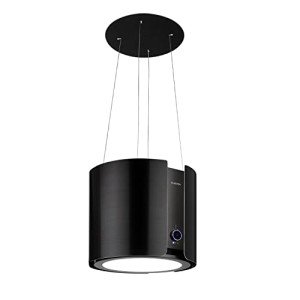What Are The Myths And Facts Behind Island Vent Hood

How to Ventilate an Island Vent Hood
Suspended from the ceiling, an island vent hood assists distribute air and keeps your kitchen devoid of smoke and odors. It's also an elegant feature that boosts your cooking space.
Ventilation types consist of external venting, which pushes air through ductwork to the beyond your home, and recirculating designs that filter and recycle cooking fumes. Some hoods can even be transformed between one and the other.
Ventilation
Unlike wall-mounted range hoods that vent air vertically through the wall to the outside, island vent hoods utilize ductwork that goes through the ceiling to exhaust the cooking area to the outdoors. The difference is that they can likewise be utilized to recirculate air.
Discover our selection of commercial and designer custom-made hoods with effective ventilation systems. With personalized specs, find the best hood for your kitchen space.
Dacor's ConnectOn auto-responsive technology turns on the hood and increases the fan speed in response to the cooktop, supplying effective performance while utilizing very little sound. It's just another manner in which you can cook with self-confidence. Include a touch of contemporary with this stainless-steel pyramid-style wall-mount canopy hood. This hood with dignity accents sophisticated cooking areas that follow a more conventional design style and clarifies of smoke, steam and cooking smells.
Style
Unlike wall-mounted range hoods that are mounted against the wall, island vent hoods are suspended from the ceiling over an island or peninsula cooktop or range. island extractor fan use ductwork to exhaust air out of the home. This design is perfect for kitchen areas that have a lot of open space, and it assists to include visual interest to your room. This new home functions Blackberry stained cherry cabinetry on the criterion, and a natural stacked stone on the island and vent hood to match the Gunstock stain on the cabinets. 10ft ceilings and a skylight help to keep the kitchen bright and large.
Sound
While an island vent hood does a fantastic job of filtering smoke, grease and odors out of your kitchen, it can also create some noise that interrupts the serenity of your cooking space. Fortunately, there are some techniques you can employ to lower this noise and allow you to prepare in peace.
Among the main reasons for excess range hood sound is triggered by fan motor issues such as stiff bearings or improperly lubed fans that produce a loud humming sound. Ductwork can also add to this issue especially if the ducts are too small or if they are blocked with dust.
The very best method to lessen sound is to guarantee that your vent hood has the greatest air flow rating that you can afford. The Home Ventilating Institute (HVI) recommends an air flow rate of 100 to 250 cfm for wall-mounted hoods over 30-inch large ranges. This hood must also have a multispeed fan to allow lower fan speeds during light cooking. One of the easiest ways to decrease the noise is to make sure that the ducting is smooth-walled, as corrugated duct limits airflow. You ought to likewise keep the duct runs as short and straight as possible to avoid any kinking.
Setup
Ventilation of island range hoods is a various process than wall-mounted units, given that they are suspended from the ceiling over an island or peninsula cooktop or range. They normally need a duct that goes through the ceiling and out through the roof, which can be a complicated job for an unexperienced homeowner.
In addition, they must be installed a minimum of 24-inches to 36-inches above the cooking surface area. The height might differ, depending on the size of the hood and the ceiling. If you have existing ducting and electrical circuitry in the kitchen ceiling, this type of vent hood is reasonably easy to install. If not, it's suggested that you speak with an expert.
To start setup, make sure the hood can fit through the opening you have actually selected for the vent and that it's the best width to accommodate the ductwork and exhaust. If the hood is too broad, it can lessen the efficiency of the vent and will increase noise levels. Next, cut a small hole in the ceiling and utilize a wire cutter to examine that there's no plumbing or electrical circuitry near the hole. If there is, consider working with an expert for the job or changing to a recirculating unit.

If there isn't, you can begin the larger vent hole by drilling locator holes with a drill and a 1/2-inch masonry bit in each corner of the location. Then use a jigsaw to cut the larger vent hole. Lastly, include a drywall spot and paint to finish the job. As soon as the hood is in place, you can run the electrical wiring and link it to your breaker box. Follow your manufacturer's guidelines for complete installation information.
